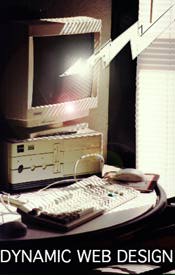
DEVELOPMENT OF THE INSTRUCTIONAL DESIGN
When creating dynamic web instruction, the idea is to produce learning
materials which can be modified by learning and experience. I believe that
the development of these complex materials can best be done in a collaborative
and dynamic process. The creation of any instruction requires careful deliberation
and research as well as active imaginations. For dynamic instructional
materials, a certain amount of computer programming is also required. The
first step is to establish that certain learner needs exist. The instructional
designer(s) then work towards solutions which serve those needs both in
the materials to be designed and in the requirements of those available
talents to develop those materials. As the first step in designing a MOO
tutorial,(@Describe), I prepared the following analysis.
Needs, Goals, Justification,
Criteria
DEFINING THE PROJECT
In the MOO tutorial project, it was decided that new users coming to
a Multi-user Object Oriented environment could benefit from tutorials.
The primary target users were defined as intermediate level students. Taking
into consideration the variety of literacy variables, the belief is that
these young learners will find visually-oriented materials more appealing
than strictly text-based learning. A visually attractive tutorial could
serve as an inviting bridge to the text-based virtual world of the MOO.
Because of the precision required in communications in the MOO, learners
can benefit from practice in reading and writing. It is possible to begin
the development of skills which underlie those which are needed in programming.
The challenge was to make this tutorial a dynamic one, and for this, JavaScript was chosen as the vehicle for two main reasons:
A DYNAMIC PROCESS
The dynamics of creating a dynamic instruction were aided by the context
of the course itself. Having had an overview of CGI, JavaScript and Java
gave me a basic understanding of the complexities of programming. Many
resources were made available through the course, both in class and on
the 1551 course home page
and
through conferencing, using the Virtual University discussion forums. Examples
were to be found in text references and web documents. Accessing the collective
expertise of the professor and classmates became an integral part of this
dynamic process. Meeting with the other two team members or communicating
with them by e-mail, became an important aspect of tutorial development.
As my tutorial has evolved, the activities have been through numerous revisions, aiming for more refined and dynamic interactivity for the learner. For example, in Activity 3, I went from radio buttons, checkboxes and popup menus to textboxes, discovering in the process how much more this option encouraged writing, which was, in fact, the ultimate goal.
Now that the @Describe tutorial is completed, it will be passed to the MOO, MOOOISE, through a Java Applet, MOOCA. MOOCA will have to be open in the same window as the @Describe page for the transfer to take place.
ANOTHER EXAMPLE
The same idea (a dynamic process for developing a dynamic project)
also worked at a distance. In this case, I collaborated with eleven participants
on the development of a dynamic web site:
Webzotica
Odyssey
.
We communicated through Spectrum Virtual University
in a course called Building the Ultimate Web Page
as well as via e-mail
and IRC. As one of the sub-leaders, I became very active in the development
of the various elements of the site, exchanging ideas and resources towards
the goals of the project. Initially, figuring out the intricacies of working
together at a distance was more like working with a Japanese puzzle box
where panels must slide in a proscribed manner in order to reach the secret
compartments. Designed as an entertaining and educational site, developers
shared the processes by which they worked on various features, thus modeling
how to do it for those interested in learning how the page was created.
I give special credit to the Webzotica leader, Tom Renckly. By e-mail and IRC from Alabama, Tom patiently answered many questions as I learned sufficient JavaScript for creating the tutorial. I found JavaScript a huge challenge and I am very grateful for Tom's encouragement and support.
SUMMARY
Although advanced web techniques such as CGI, JavaScript and Java are
highly demanding and specialized skills, progressive educators can begin
to build dynamic instruction on the world wide web by working in a dynamic
environment. Working with others, pooling resources and expertise, sharing
strategies and skills - effective, interactive and truly dynamic instruction
can be developed using the latest technologies.